Home> Company News> Application of microwave heating in wood processing
- AddressNo.4087 SHAHEXI ROAD, TIAOQIAO DISTRICT,JINAN,CHINA
- Factory AddressNo.4087 SHAHEXI ROAD, TIAOQIAO DISTRICT,JINAN,CHINA
- Worktime9:00-18:00
- Phone(Working Time)0531-85064681
- Phone(Nonworking Time)86-18660125156
- Fax0531-85064682
Application of microwave heating in wood processing
2018-10-22 14:03:59Abstract: microwave technology is widely used for its advantages of high efficiency, fast energy saving and so on. Starting with the origin and development of microwave technology and microwave heating, this paper introduces the application of microwave heating drying equipment in wood processing.
Microwave is a kind of electromagnetic wave whose frequency is between radio wave and far infrared ray. Its characteristic is high frequency and short wavelength. Its frequency and wavelength range are about 300 MHz to 300 kMz and 1~100 mm. Microwave technology is first applied in the fields of communication, broadcasting and television. It is found that microwave can cause thermal effect in use, and then the application research of microwave heating has begun worldwide. At present, the frequency of microwave heating is 915 MHz and 2450 MHz. Microwave drying originated in the 1940s. By the end of the 1960s, microwave energy had been used in heating, drying, insecticide, sterilization, medical and other industrial projects. The application of microwave drying technology in China began in the early 1970s. At present, microwave technology has been applied in light industry, food industry, chemical industry and agricultural products processing and other fields. This paper introduces the application of microwave heating and drying in wood processing.
Researchers in the United States, Japan, Canada, Germany and other countries began to study and use wood drying equipment in the early 1960s, and considered that wood drying equipment is the most effective and rapid drying method. In 1974, China began to study the technology of wood drying by microwave. In 1977, a wood microwave dryer developed by the microwave Research Institute of Nanjing No. 772 Factory was first used in Wuxi Furniture Factory. Because of the uniform heating, fast drying speed, small drying stress and good quality, microwave was once widely used in Beijing, Tianjin, Shanghai, Nanjing, Zhenjiang, Qingdao, Harbin and other places. Later, due to high investment, power consumption, drying costs and other shortcomings, to the mid-1980s, the microwave drying plants have stopped production. Since the 1990s, the microwave drying equipment has been improved and the drying technology has been matured. The application of this drying technology in China has been restored.
The principle and advantages of microwave drying wood: The principle of microwave drying wood is to use wet wood as dielectric, under the action of microwave electromagnetic field, cause water molecule polarization in wood, at the same time, because of the frequent alternation of electromagnetic field, make water molecule swing frequently at high speed, friction heat, thus heating and drying wood. Microwave drying wood has the following advantages: fast drying speed of microwave drying wood, because heat is not from the outside of the wood, but in the wood internal water molecules and wood friction directly generate heat, also known as "volume heating". This volume heating allows the dried wood to heat almost simultaneously along the entire thickness, and the time required for heat penetration is independent of the thickness of the wood. The moisture inside the wood vaporizes rapidly, forming a pressure to diffuse outward. At the same time, the temperature inside the wood is actually higher than the surface temperature because of the heat loss and evaporation of moisture on the surface of the wood. Therefore, the temperature gradient of microwave drying is consistent with the moisture gradient, which greatly speeds up the movement of moisture.
Good drying quality: due to the increase of permeability in microwave drying of wood, during the drying process, the heat is uniform, the water in the wood is discharged from inside to outside at the same time, so that the expansion and shrinkage coefficient of wood is basically the same, so as to maximize the avoidance of wood deformation, cracking and other defects in the drying process, and drying uniform, residual. The residual stress is small. In addition, microwave drying wood has selectivity. The high moisture content part absorbs more microwave energy and gets more heat, which is beneficial to the consistency of moisture content of wood.
The change of wood color is related to temperature, action time and moisture content. The higher temperature, action time and moisture content, the faster wood color change. Compared with conventional drying, the microwave drying cycle of wood is shortened by tens to hundreds of times, and each heating process is from low temperature to high temperature, so the residence time at high temperature is shorter. Therefore, microwave drying of wood hardly changes the original color and luster of wood.
The microwave drying wood process can completely kill all kinds of insects and fungi, eliminate insect pests in wood products, help to improve the strength of products and extend the service life.
The equipment occupies space and is suitable for pipeline production of microwave drying equipment. Its main machine and auxiliary equipment are simple, and the outline size is small, and the area occupied is small. Microwave drying process can realize automatic and continuous processing. It is suitable for production line and has high productivity.
The most important feature of microwave drying equipment for wood semi-finished products is that it can dry wood semi-finished products directly. Usually, wood products are made by drying the wood before using, such as cutting the material to make a shape and then drying, forming wood in the drying process slightly cracking, deformation, can not be used. And the wood made by microwave direct drying is not deformed, cracked and damaged, so wool can be made into various shapes of semi-finished products according to the needs of wood structure, and then dried in microwave oven. In general, the utilization ratio of wool in woodwork production is about 60%. It can save drying energy after semi-finished products are dried.
The application and research of microwave drying in the 1970s, scholars in the United States, Japan and other countries carried out research on microwave drying of wood, and made microwave dryer suitable for wood drying. Patents on wood microwave drying methods and equipment appeared.
The 2.54 cm (1 inch) thick American pine plate was dried by microwave energy and convective hot air. The experiment shows that this method is feasible and feasible. Heart cracking, surface hardening and Wood Carbonization were found to be the shortcomings of this drying method, which could be eliminated by adjusting microwave input power and air temperature. The effects of heating time, moisture content, shape difference and heating position on the drying speed of basswood wool and wood bears carved from basswood wool were studied. The results showed that drying speed was fast and cracking could be avoided. The difference of heating position and shape had little effect on drying speed. A continuous device for microwave drying has been studied. Some factors affecting microwave drying of hard wood of different tree species were studied. The weight, internal steam pressure and temperature of white wax wood, beech wood and oak wood were measured by microwave drying. The experiment showed that the wood of Fraxinus chinensis and beech was suitable for microwave drying, while oak drying was difficult.
The increase of the internal temperature of each specimen is similar. According to the size of the specimen, the heating rate varies between 0.2 C/min and 3 C/min. The velocity of water diffusion varies between 0.05 g/min and 0.32 g/min, but it is independent of specimen size. Microwave drying of pine and spruce wood was also studied. The drying efficiency and energy density of pine and spruce wood from wood drying to 8% moisture content were determined. The drying process is controlled by measuring the internal temperature, internal steam pressure and water evaporation rate. The internal vapor pressure of wood can increase to about 20 KPa without cracking. The highest drying rate above the fiber saturation point can reduce the moisture content by 0.20%-0.45% per minute. The suitable drying rate below the fiber saturation point decreases the moisture content by 0.10%-0.20% per minute. The drying rate of spruce is about 1.6 times faster than that of pine. Wood did not crack but some of the samples changed color inside.
In 1977, Shanghai Changzheng Wood Products Factory, in cooperation with Northeast Forestry College, carried out a systematic experiment on wood microwave drying technology in China. 15 batches of test materials were tested in production technology. It was considered that the medium and thick wood of pine, elm, birch, Castanopsis and oak, which were easy to be dried, medium or difficult to be dried, were suitable for drying. Wood can be dried to the final moisture content of woodworking materials by microwave drying equipment. In 1982, microwave drying experiments were carried out under factory conditions. The microwave drying criteria for some commonly used tree species and sawn timber were proposed. The drying quality and drying cycle of microwave drying and convective drying were analyzed and compared. The relationship between drying speed, moisture content and drying quality of small Fraxinus mandshurica square and basswood lumber was discussed. In order to understand the mechanism of microwave drying wood theoretically, phenomenological theory was used to study the relationship between dielectric tensor of wood and frequency, and the general expression of heat generation in microwave drying wood was obtained. Improving wood drying quality, reducing wood loss, reducing energy consumption, improving equipment productivity, improving labor environment and reducing environmental pollution, reducing drying costs are the main themes of wood drying development.
Microwave drying is the application of microwave heating in wood processing. 165 uses clean electric energy. As our country is rich in electric power day by day, it has stepped into the power country of the world. The ratio of electricity price to coal price is gradually decreasing. Therefore, microwave drying and other drying methods using electricity as energy are expected to have an obvious growth trend in the 21st century. Microwave drying will play an important role in solving thick, precious and difficult to dry materials in the future. Of course, microwave drying can also be used for drying small diameter logs, veneers, veneers and crushed materials. The microwave drying of veneer was studied. The drying experiment was carried out with a small intermittent microwave drying device. The results showed that the drying speed increased with the increase of output power, especially under the fiber saturation point. The drying defect is the occurrence of spot carbonization, which is related to the increase of the surface temperature of the veneer. Carbonization will occur when the surface temperature is above 150 C. Energy efficiency is related to microwave output power, final moisture content, veneer thickness, and the volume of veneer dried. From 1977 to 1978, Harbin No. 2 Transformer Plant, Harbin Wood-based Panel Plant and Forestry Engineering Department of Northeast Forestry College cooperated together. For the first time, microwave energy was used to dry particles, and some results were obtained. It was considered that microwave energy drying particles (fragments) was technically feasible. Microwave drying of Small-Diameter Birch logs was studied in 1995. It was considered that microwave drying of Small-Diameter Birch logs was technically feasible. The microwave drying technology of small diameter round and oblique section of Robinia pseudoacacia was studied in 1998. It was suggested that it was feasible to use microwave drying for small diameter round and oblique section of Robinia pseudoacacia. The drying standard of oblique section should be softer than that of circular section.
There are two methods of wood drying by microwave, that is, rapid drying by microwave and Balancing Moisture Content by utilizing the dielectric properties of wood. A Microwave-hot air dryer was used to balance the moisture content of dried but still very wet coniferous veneers. Drying is optional because wet regions absorb more microwave. The adhesive force of microwave redrying veneer is equal to or better than that of the first drying veneer or the hot air redrying veneer. The results of the seam test of microwave redrying veneer are not significantly lower than those of the other two veneers.
Microwave drying can prevent over-drying, and make veneer softer, after drying due to splitting or damage reduction, microwave drying veneer less than hot air drying veneer. Microwave drying of Citi Pine veneer was studied. The samples were dried by microwave and conventional equipment. The results of electron microscopy showed that the cell wall of the veneer dried by microwave was not damaged. Microwave drying of wood may be used in the second stage of two-stage drying, that is, in the stage of low moisture content drying, which can give full play to its drying characteristics and reduce energy consumption appropriately. For example, dehumidification and microwave combined drying, air drying and microwave two-stage drying have the advantages of energy saving and rapid drying. The combined drying of these different methods is expected to have a better development prospects in the 21st century.
Microwave wetting: microwave drying is usually done by microwave heating or dielectric constant measurement. The biggest advantage of microwave heating drying method is that it is fast and suitable for on-line determination, so it has important significance in water determination and on-line moisture measurement and control in production process. Another way to measure moisture by microwave technology is to measure the change of dielectric constant of material. In the microwave frequency band, the dielectric constant of water is between 50 and 81, which is much higher than that of many other materials, such as plant fiber 2 to 4. So the dielectric constant of the material will have a great change if the moisture content changes slightly, so the moisture content of the material can be measured by measuring the dielectric constant change.
The method of WB-HX was put forward to improve the efficiency of measuring wood moisture content of Pinus yunnanensis. The method is divided into two steps to make the sample completely dry. The first step is to apply the principle of microwave drying to make the sample quickly dried in the microwave oven. The second step is to make the sample dried in the oven at constant temperature until it is completely dry. The total determination time of this method is 4-6 hours, which is 7 hours shorter than that of the conventional oven drying method. The accuracy of this method is the same as that of the national standard method, and the operation is convenient.
Microwave Modified Wood: In recent years, microwave modified wood has been studied in the world. At the symposium entitled "The Future of Eucalyptus Products" sponsored by IFF in 2000, microwave wood modification techniques developed by them were introduced. It was suggested that microwave could improve the axial and radial permeability of wood, thereby improving the difficult treatment. They also use microwave treatment to make a new type of wood product. This product can be made into multi-layer interstices in the diameter section. It can also stack microwave-treated and non-microwave (or mild microwave-treated) materials. It can also irradiate certain parts of wood with microwave to form different modified layers. . The research on wood modified by microwave in China is in the tentative stage. The wood modified by microwave was studied with Populus canadensis and Fraxinus mandshurica as experimental materials. The results showed that microwave treatment could improve some properties of wood, especially hardwood. The microwave treatment destroyed the weak links of the pore membrane on the cell wall of wood, precipitated or redistributed the extracts of wood, at the same time, the density of wood decreased, the ratio of tangential to radial shrinkage increased, and the water absorption of wood increased, thus accelerating the drying rate of wood.
In other parts of the research on shaping and compacting wood, rapid and efficient microwave heating was used directly. The application of wood shaping technology is the principle of wood plasticity. Wood is heated by microwave to 100-120 C to soften the wood, then compressed and shaped. Wood with certain shape can be obtained without choosing moulds according to the need of the timber making process, which can be used for building and decoration materials. Because bark hardly softens when heated by microwave, the surface of the wood is shaped to form uneven patterns, which are more natural and reach the interior of the wood. The bending process of wood in Southeast Asia and other places was studied by microwave heating technology. The relationship between bending parameters and bending quality of Fraxinus mandshurica specimens after ammonia treatment and microwave heating was studied, and the optimum bending process was determined. The results show that the bending process is feasible and the productivity of this method is obviously higher than that of the traditional production method. Cryptomeria japonica was immersed in water, soaked in a certain depth, then treated with microwave heating to soften the surface of the wood, and then hot-pressed and qualitative on a hot press to obtain surface compacted wood. Its surface properties such as hardness and wear resistance have been greatly improved.
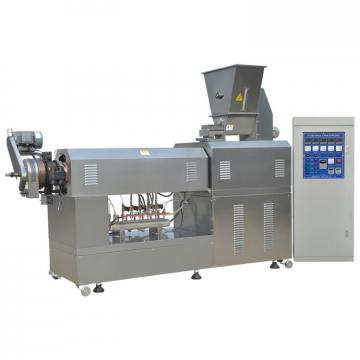 Factory Fruit and Vegetable Processing Machines/Quick Frozen Line/Food Processing Production Line for Daylily Production Line with High Output
Factory Fruit and Vegetable Processing Machines/Quick Frozen Line/Food Processing Production Line for Daylily Production Line with High Output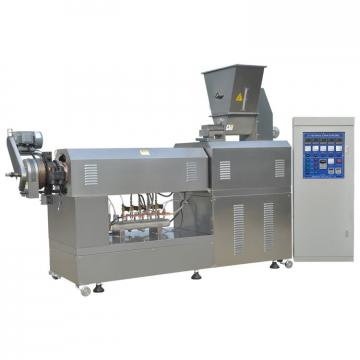 Factory Direct Sales PS Styrofoam Food Container Production Line
Factory Direct Sales PS Styrofoam Food Container Production Line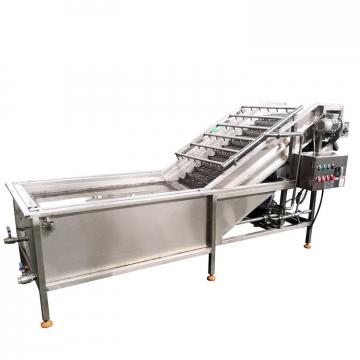 Complete Pure / Mineral Drinking Bottled Water Production Line Factory in Beverage / Food Area
Complete Pure / Mineral Drinking Bottled Water Production Line Factory in Beverage / Food Area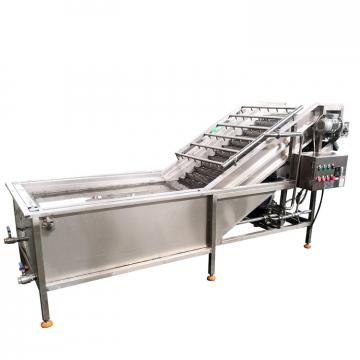 Cheetos Fried Food Production Factory Extruder Processing Line
Cheetos Fried Food Production Factory Extruder Processing Line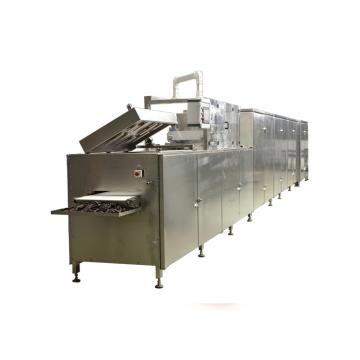 Automatic Mini Food Factory Macaroni Processing Line Pasta Production Line
Automatic Mini Food Factory Macaroni Processing Line Pasta Production Line
